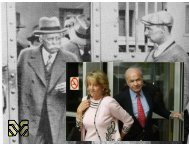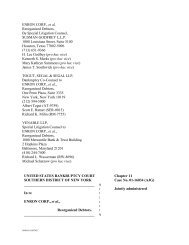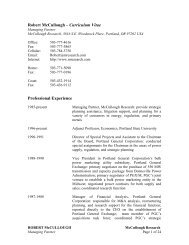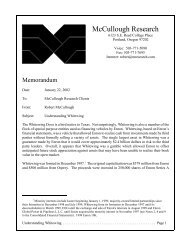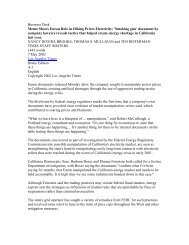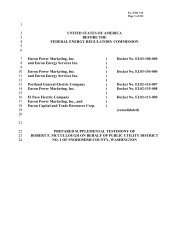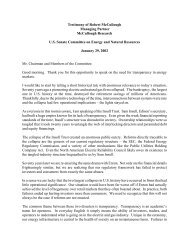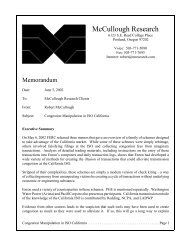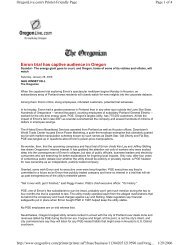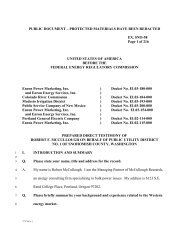Understanding LJM - McCullough Research
Understanding LJM - McCullough Research
Understanding LJM - McCullough Research
Create successful ePaper yourself
Turn your PDF publications into a flip-book with our unique Google optimized e-Paper software.
Earnings<br />
Earnings<br />
Without<br />
Raptors<br />
Raptors'<br />
Contribution To<br />
Earnings<br />
3Q 2000 $364 $295 $69<br />
4Q 2000 $286 ($176) $462<br />
1Q 2001 $536 $281 $255<br />
2Q 2001 $530 $490 $40<br />
3Q 2001 ($210) ($461) $251<br />
Total $1,506 $429 $1,077<br />
For analysts, like ourselves, who are trying to determine whether Enron Wholesale Services Americas<br />
were profitable without these income statement adjustments, this is very important. The clear<br />
implication is that Enron’s stated profits were mainly accounting fiction and that the trading<br />
operations were not making a significant contribution to the bottom line.<br />
An additional major question is whether <strong>LJM</strong> should have been consolidated with Enron. Arthur<br />
Andersen has taken the position that a part of <strong>LJM</strong>, Swap Sub, should have been consolidated because<br />
it failed to meet the 3% technical standard for non-consolidation.<br />
The Powers Report is less clear concerning consolidation of <strong>LJM</strong>1 and its follow on SPE, <strong>LJM</strong> Co-<br />
Investment L.P. (<strong>LJM</strong>2). The technical requirements that there was 3% outside equity at risk appears<br />
to have been met by both <strong>LJM</strong>1 and <strong>LJM</strong>2. At issue is whether Andrew Fastow, as an Enron officer,<br />
controlled <strong>LJM</strong>1 and <strong>LJM</strong>2. A final answer to this argument must necessarily await the detailed<br />
investigation at the SEC.<br />
While we wait for the expert opinion of the SEC, it is possible to make a very strong argument that<br />
these entities never met the control test for avoiding consolidation. Not only does the Powers Report<br />
provide the raw materials for this argument, but the materials from the <strong>LJM</strong> Annual Meeting also<br />
provide strong evidence for consolidation.<br />
The Powers Report argues that they cannot determine the degree of Andrew Fastow’s control given<br />
our current knowledge of the structure of <strong>LJM</strong>1 and <strong>LJM</strong>2. 15 While correct, it neglects to recognize<br />
that in the absence of Fastow’s control there was no reason for either <strong>LJM</strong>1 or <strong>LJM</strong>2 to exist.<br />
The raison d’etre of these two SPEs was the ability of a senior Enron executive to position Enron<br />
assets and financial requirements with the assistance of third party equity. In the absence of Andrew<br />
Fastow, the relationship could not have taken place. If the limited partners ousted Andrew Fastow,<br />
the connection that provided potential for profit would be severed. The bottom line is that the absence<br />
of an arm’s length negotiating relationship appears critical to the success of the venture.<br />
15 We have reviewed these issues in detail, and have concluded that there are no clear answers under<br />
relevant accounting standards. Fastow declined to speak with us about these issues. As we have noted, the limited<br />
partners of both <strong>LJM</strong>1 and <strong>LJM</strong>2, citing confidentiality provisions in the partnership agreements, declined to<br />
cooperate with our investigation by providing documents or interviews. Powers Report, page 76.<br />
<strong>Understanding</strong> <strong>LJM</strong> ....................................................... Page 5



